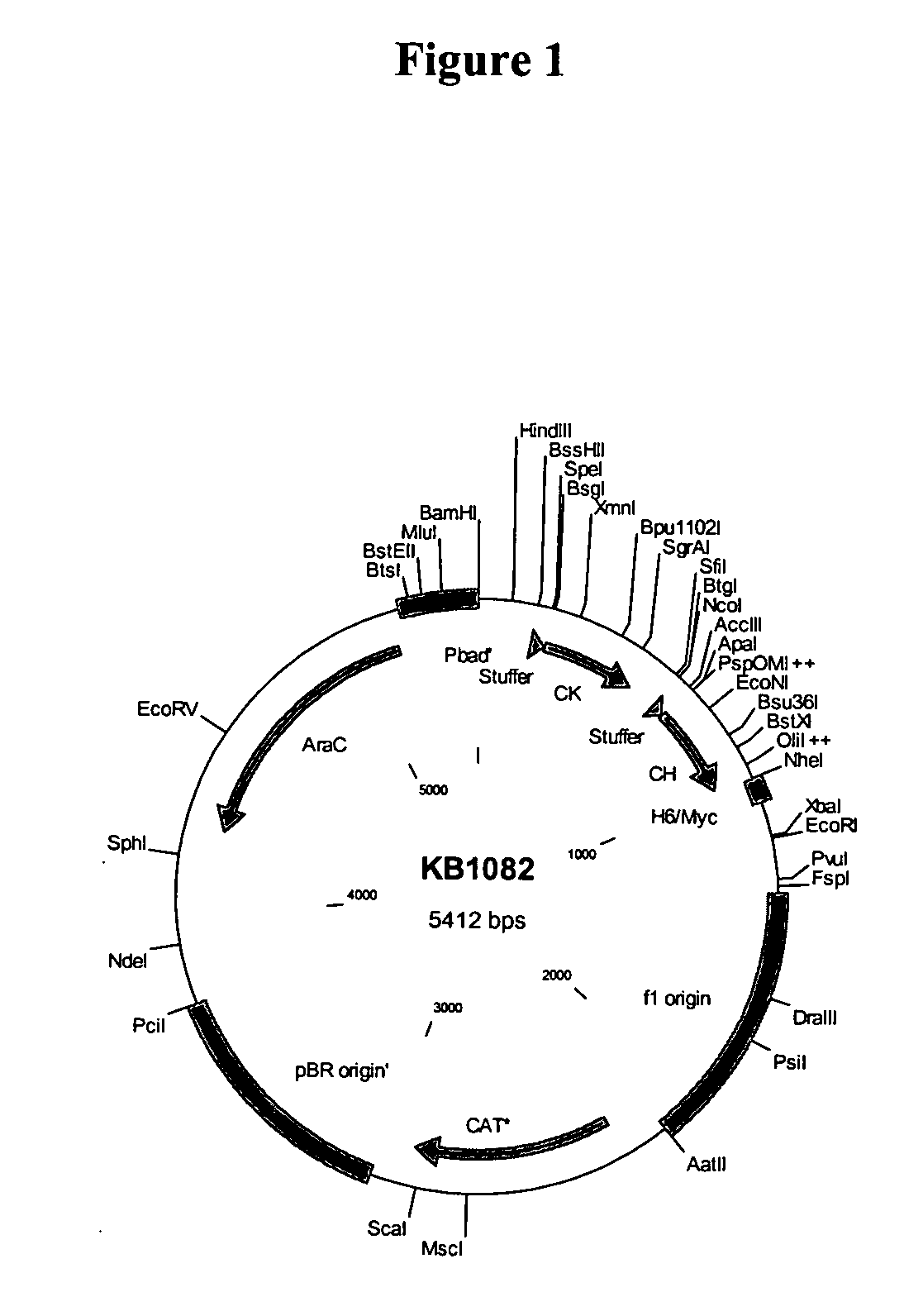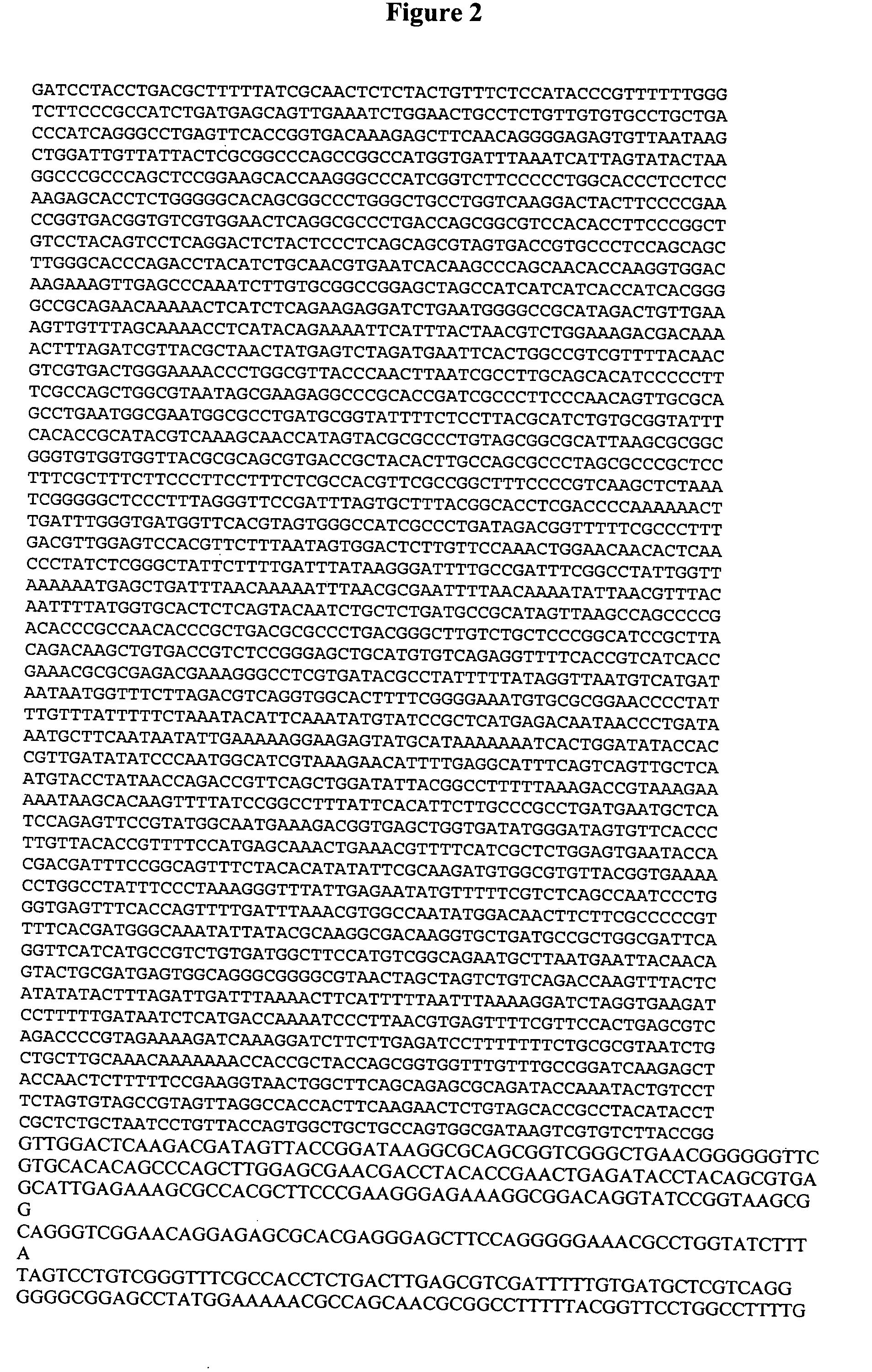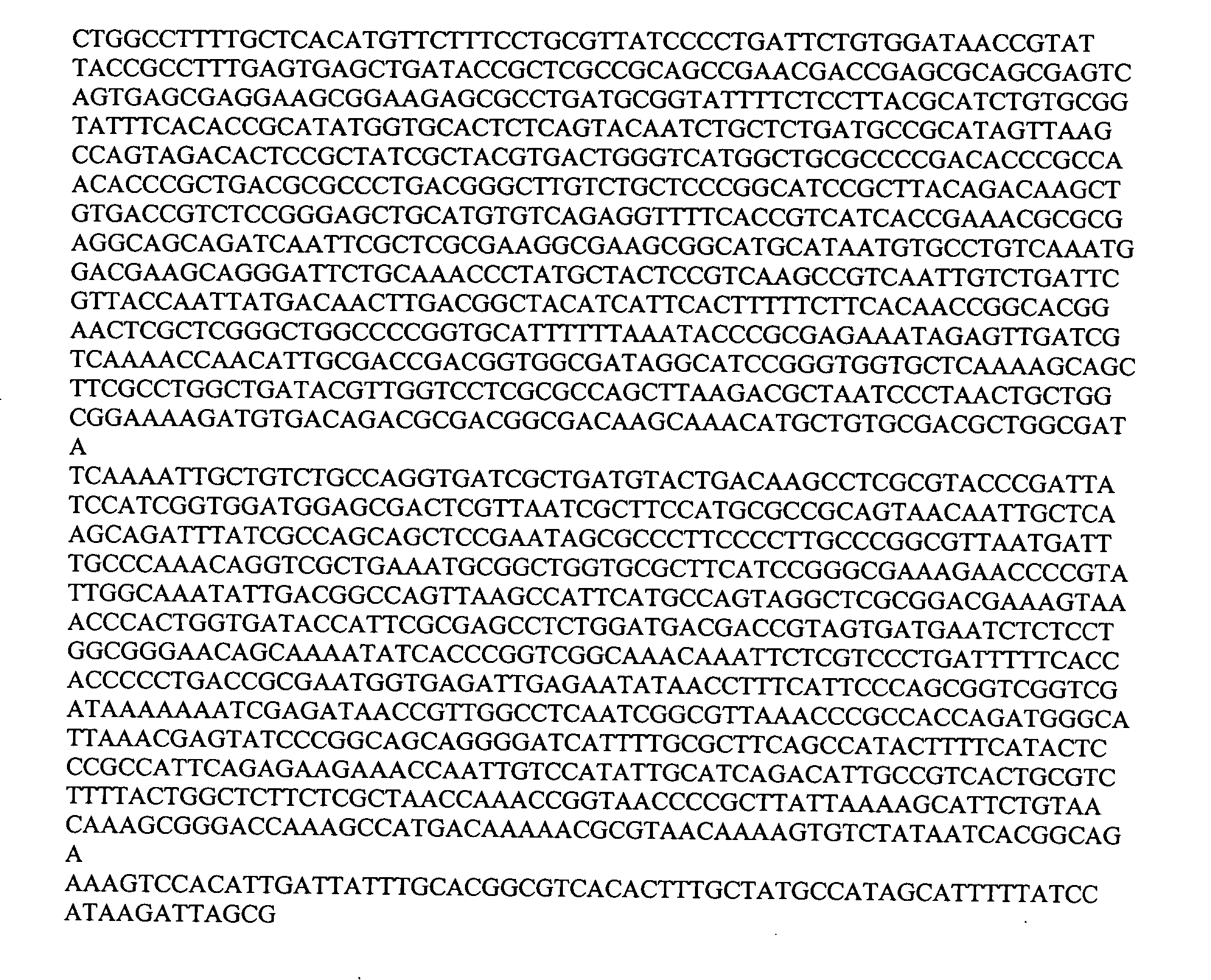Antibody specificity transfer using minimal essential binding determinants
a technology of essential binding determinants and antibodies, applied in the direction of directed macromolecular evolution, drug compositions, fused cells, etc., can solve the problems of insufficient isolation of bioactivities, low affinity maturation efficiency, and compromised efficacy and safety of non-human antibodies
- Summary
- Abstract
- Description
- Claims
- Application Information
AI Technical Summary
Benefits of technology
Problems solved by technology
Method used
Image
Examples
example 1
Construction of Epitope-Focused Libraries of Antibody Fragments by In Vitro Transcription
[0175] Messenger RNA encoding an antibody repertoire is isolated from Ig-producing cells of the human immune system. One unit of whole blood is drawn from a human donor and a buffy coat preparation is made using standard procedures. Peripheral blood mononuclear cells (PBMCs) are purified by Ficoll-Hypaque density centrifugation to enrich for Ig-producing B lymphocytes. Total RNA is purified from the PBMCs using a commercially available RNA purification kit (Qiagen RNeasy) used according to the manufacturer's specifications. mRNA is enriched from the total RNA using a commercially available RNA purification kit (Qiagen Oligotex mRNA kit) used according to the manufacturer's specifications. The mRNA from several donors of different ethnic backgrounds is pooled to increase the diversity of the final V segment repertoires. Additional diversity can be obtained from human spleen mRNA obtained from ei...
example 2
Construction of Epitope-Focused Libraries of Antibody Fragments by PCR
[0191] For PCR-mediated amplification and cloning of antibody repertoires, two primer sets are used. The sense primer-set anneals to the N-terminal region (positions 1-8 for Vh, Vκ and Vλ according to the Kabat numbering scheme) of the V segment and contains a restriction site(s) appended to the 5′ end (in this case Sfi I and Nco I) suitable for use in cloning into a plasmid vector. The anti-sense primer-set anneals to the C-terminal end of framework three (FR3; positions 86 to 90 for Vh, positions 80 to 86 for Vκ and positions 81 to 86 for Vλ according to the Kabat numbering scheme). All of the antisense primers include an invariant nucleotide sequence for the YYC peptide (Kabat positions 90 to 92 for Vh, 86 to 88 for Vκ and Vλ. Each antisense primer includes a restriction site appended to the 5′ end (in this case Sal I) suitable for use in cloning into a plasmid vector. Some primers in each set are degenerate a...
example 3
Identification of Human Anti-PcrV Antibodies Containing a MEBSD from a Murine Antibody CDRH3 Region
[0204] The HCDR3 typically consists of amino acids from the D region, the J region and N-additions (amino acids encoded by nucleotides added during in vivo recombination). The LCDR3 consists of amino acids from the V region, J region and N-additions. The Minimal Essential Binding Specificity Determinant (MEBSD) can be all or part of a CDR3. Libraries of antibodies can be constructed by attaching V segment libraries onto the MEBSD derived from an HCDR3 or an LCDR3.
[0205] In order to determine whether a D-segment with associated N-additions could define a MEBSD, the CDRH3 region of murine antibody M166 was analyzed to identify the D-segment and any associated N-additions (see FIG. 5). The M166 HCDR3 was compared to all identified murine germ-line D segments. The closest sequence similarity for the D region is to murine D segment D-SP2.2. The N additions are represented by two amino aci...
PUM
| Property | Measurement | Unit |
|---|---|---|
| Electric potential / voltage | aaaaa | aaaaa |
| Molar density | aaaaa | aaaaa |
| Molar density | aaaaa | aaaaa |
Abstract
Description
Claims
Application Information
 Login to View More
Login to View More - R&D
- Intellectual Property
- Life Sciences
- Materials
- Tech Scout
- Unparalleled Data Quality
- Higher Quality Content
- 60% Fewer Hallucinations
Browse by: Latest US Patents, China's latest patents, Technical Efficacy Thesaurus, Application Domain, Technology Topic, Popular Technical Reports.
© 2025 PatSnap. All rights reserved.Legal|Privacy policy|Modern Slavery Act Transparency Statement|Sitemap|About US| Contact US: help@patsnap.com



